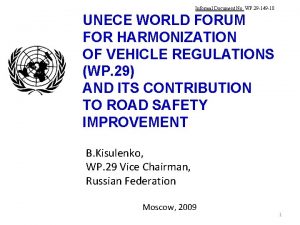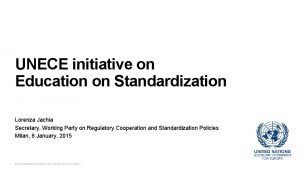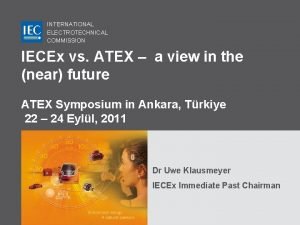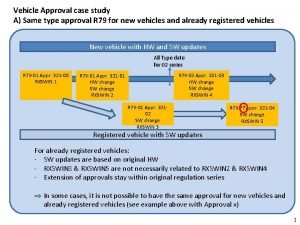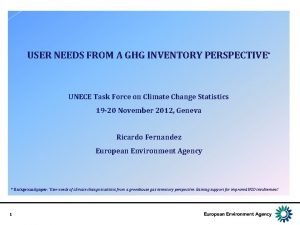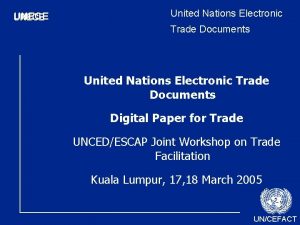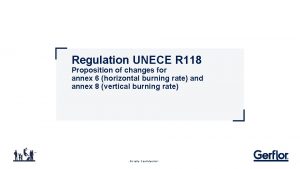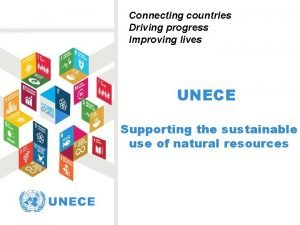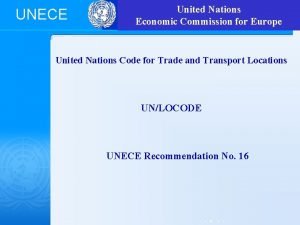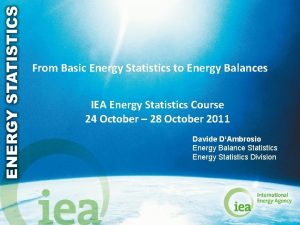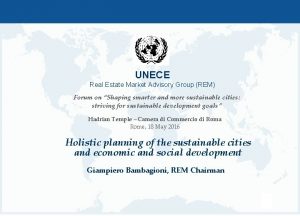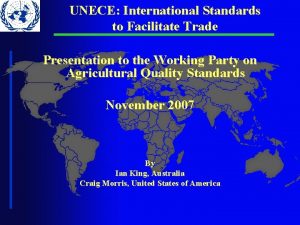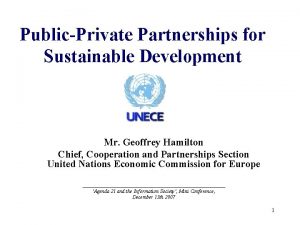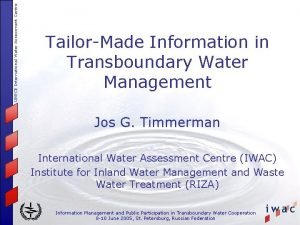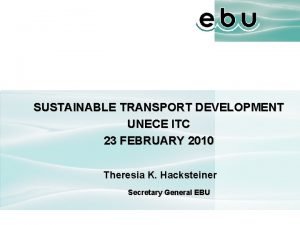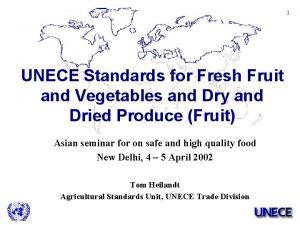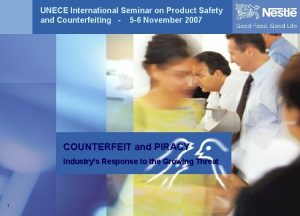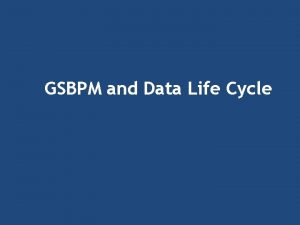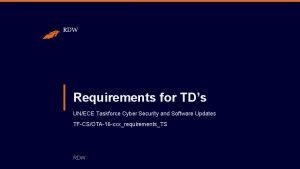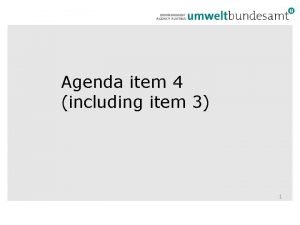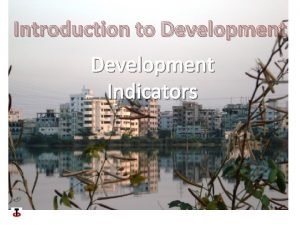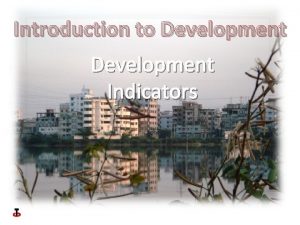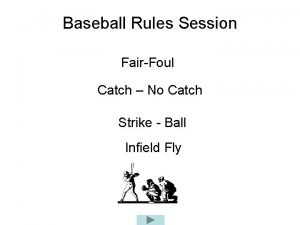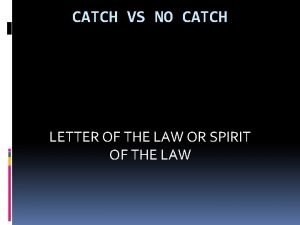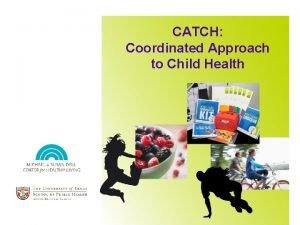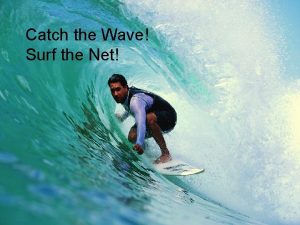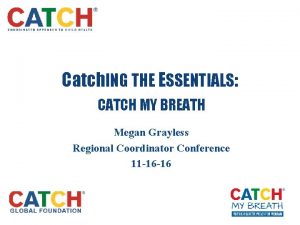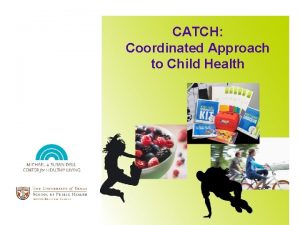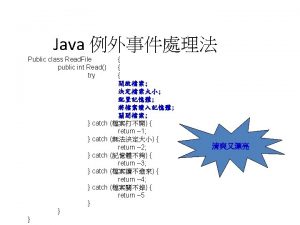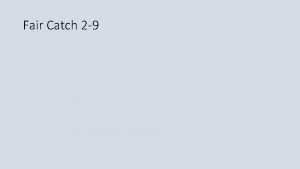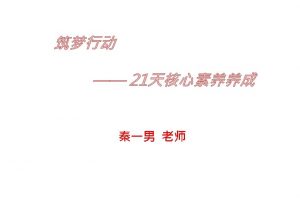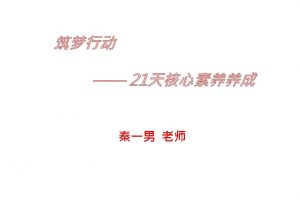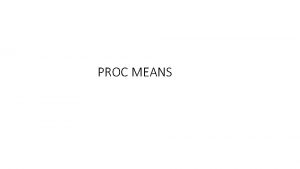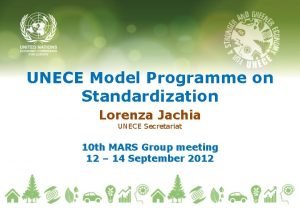UNECE TF on Environmental Indicators WHAT CATCH MEANS






![Catch diagram CATCH = [Fishing Effort] * [Fish abundance available to fishing] # boats; Catch diagram CATCH = [Fishing Effort] * [Fish abundance available to fishing] # boats;](https://slidetodoc.com/presentation_image_h/7d010a7e47795dada04036955e825882/image-7.jpg)

![Catch diagram CATCH = [Fishing Effort] * [Fish abundance available to fishing] # boats; Catch diagram CATCH = [Fishing Effort] * [Fish abundance available to fishing] # boats;](https://slidetodoc.com/presentation_image_h/7d010a7e47795dada04036955e825882/image-9.jpg)













- Slides: 22

UNECE TF on Environmental Indicators WHAT “CATCH” MEANS IN ENVIRONMENTAL CONTEXT? 30/10 -01/11/2012 Sachiko TSUJI (FAO)

- - How “catch” is determined – meaning of catch Detailed definition of catch Indication of “catch” in a context of monitoring “environment” We cannot see underneath of water – limitation in available information; invisible, less noticeable Aquatic – terrestrial biological dynamics – no difference in principle UNECE TF on Environmental Indicators 30/10 -01/11/2012

Senior Fishery Statistician of FAO § Responsible for all Fishery and Aquaculture statistics disseminated from FAO § Participated in development of UN SEEA, CBD aquatic Secretary of Coordinating Working Party on Fishery Statistics (CWP) § FAO Statutory global coordinating mechanism - 22 organizations as members § Objectives - set up standards, concepts and classifications for fisheries statistics, review information needs, coordination for research and collaboration UNECE TF on Environmental Indicators 30/10 -01/11/2012 Personal background – population dynamics

What “catch” means ? Dynamics on aquatic stocks, fishing activities, catch and environmental impacts.

Dynamics of biological stock

Dynamics of biological stock
![Catch diagram CATCH Fishing Effort Fish abundance available to fishing boats Catch diagram CATCH = [Fishing Effort] * [Fish abundance available to fishing] # boats;](https://slidetodoc.com/presentation_image_h/7d010a7e47795dada04036955e825882/image-7.jpg)
Catch diagram CATCH = [Fishing Effort] * [Fish abundance available to fishing] # boats; Gear technology; Fishing Days ENSO events; Climate changes impacts,

Sustainable Yields Stock Abundance Sustainable Yields Catch Fishing Efforts
![Catch diagram CATCH Fishing Effort Fish abundance available to fishing boats Catch diagram CATCH = [Fishing Effort] * [Fish abundance available to fishing] # boats;](https://slidetodoc.com/presentation_image_h/7d010a7e47795dada04036955e825882/image-9.jpg)
Catch diagram CATCH = [Fishing Effort] * [Fish abundance available to fishing] # boats; Gear technology; Fishing Days ENSO events; Climate changes impacts, Urbanization; Water front development; Pollution

Dynamics of biological stock

Dynamics of biological stock -- Impacts of habitat destruction

Dynamics of biological stock -- Combination with aquaculture Release of farmed seeds Removal of predators; Fertilizing; Blocking fish moves

Multi-species context Single population theories not applicable to multi species context: § Too complex for modeling § Generally lower suitable harvest point; conflict between over-exploited primary species. vs. under-exploited secondary species “Fished – down” – size change § Big fish and commercially high valued fish removed, first § Size of fish getting smaller – matured at small size with young age; fish becoming thin > lower productivities “Fished – down” – change in species composition 30/10 -01/11/2012 UNECE TF on Environmental Indicators § Moving to alternative less preferable species

Small scale. vs. large scale

What to measure ? Identifying measurement and indicators suitable to monitor target events

Selection criteria of indicators: Directly measurable, not abstractive concepts: Sensitive and responsive to change in targets: Clear reflective relation to behavior of targets; Cost-effective: Robust and less sensitive to noise: Consistent with public understandings and technical indications: UNECE TF on Environmental Indicators 30/10 -01/11/2012 Adequate time-series:

Concept of catch Diagram Fish Encountering Gear Live Escapement GROSS REMOVAL Pre-catch Losses GROSS CATCH Discards: Live / Dead RETAINED CATCH Losses and gains prior to landing (e. g. handlings, processing) Not for landings (dumps, substantial uses) LANDINGS Landing * Conversion factors > NOMINAL CATCH

Currently available data and indicators Contribution to food security -- FAO § Catch by species and species groups : Retained catch < converted from Landings § Trades, disposition by species and species groups Stock assessment / management purpose -Regional Fishery Management Organizations (RFMOs) § Gross removal (including discards), species- specific § Stock indicator – e. g. catch taken by unit effort (CPUE) 30/10 -01/11/2012 UNECE TF on Environmental § Stock assessment results of Indicators species under

Currently available data and indicators Stocks status as macro-indicators § Average trophic level – EU Indicators § Gross removal adjusted with effort indicator (quasi -CPUE) – SEEA Bio-diversity – CBD for aquatic (FAO) in pipeline § List of aquatic species captured as well as farmed: survey questionnaires in preparation § RFMOs – observer data on incidental-catch, discards, of ecologically related species and vulnerable ecosystem species § List of Protected Areas UNECE TF on Environmental Indicators 30/10 -01/11/2012

UNECE members – data reporting status In general, good data quality and species breakdown; § Belarus, Finland, Kazakhstan, FYR Macedonia, Russian; Serbia, Ukraine Recently, struggle in communication: § No reporting – Armenia (2005), Bosnia and Herzegovina (2007); Georgia (2005, except marine capture in 2010); Turkmenistan (2005); Uzbekistan (2010) Some component systematically not reported: § Belgium (inland aquaculture); Moldova (no aquaculture since 2005); Montenegro (aquaculture); Tajikistan (no capture since 2005) 30/10 -01/11/2012 Some incomplete inconsistent among years; UNECE TF onor Environmental Indicators

Points for consideration: Indicators of human pressure on environments – important: § Fishing pressure, small and large scale operations § Non-fishery human activity pressure – no indicator available § Impacts of human intervention – stocking, landscaping, protected area Clarify the monitoring target: § Not possible to monitor biodiversity and human pressure on aquatic environments with one indicator § Direct measurement better than indirect indicators – e. g. for pressure on aquatic environment, energy use in fishing § Clarify a link with policy decision – interpretation and actual utilization UNECE TF onbuild Environmental Indicators 30/10 -01/11/2012 Avoid duplication and upon available resources:

Thank you for your attention!!


